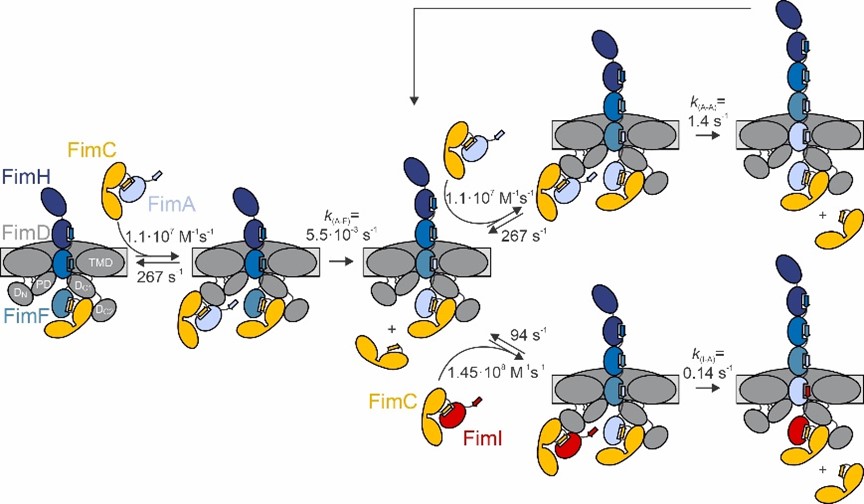Stochastic chain termination in bacterial pilus assembly
Researchers from the Glockshuber group report the reconstitution of bacterial type 1 pilus assembly in vitro, show that the naturally observed pilus length distribution results from a stochastic chain termination reaction, and present a complete kinetic model for pilus rod assembly and termination.

Adhesive type 1 pili from uropathogenic Escherichia coli strains are filamentous, supramolecular protein complexes consisting of a short tip fibrillum and a long, helical rod formed by up to several thousand copies of the main pilus subunit FimA.
Researchers from the Glockshuber group at the IMBB now reconstituted the entire type 1 pilus rod assembly reaction in vitro, using all constituent protein subunits in the presence of the assembly platform FimD, and identified the so-far uncharacterized subunit FimI as an irreversible assembly terminator. The researchers provide a complete, quantitative model of pilus rod assembly kinetics based on the measured rate constants of FimD-catalyzed subunit incorporation. The model reliably predicted the length distribution of assembled pilus rods as a function of the ratio between FimI and the main pilus subunit FimA and was fully consistent with the length distribution of membrane-anchored pili assembled in vivo. In addition, FimI was shown to contribute to anchoring the pilus to the outer membrane and solved crystal structures of (i) FimI in complex with the assembly chaperone FimC, (ii) the FimI-FimC complex bound to the N-terminal domain of FimD, and (iii) a ternary complex between FimI, FimA and FimC provided structural insights on pilus assembly termination and pilus anchoring by FimI.
The study shows that the naturally observed length distribution of type 1 pili results from a stochastic chain termination reaction analogous to dideoxy DNA sequencing.
Link to the paper in external page "Nature Communications".